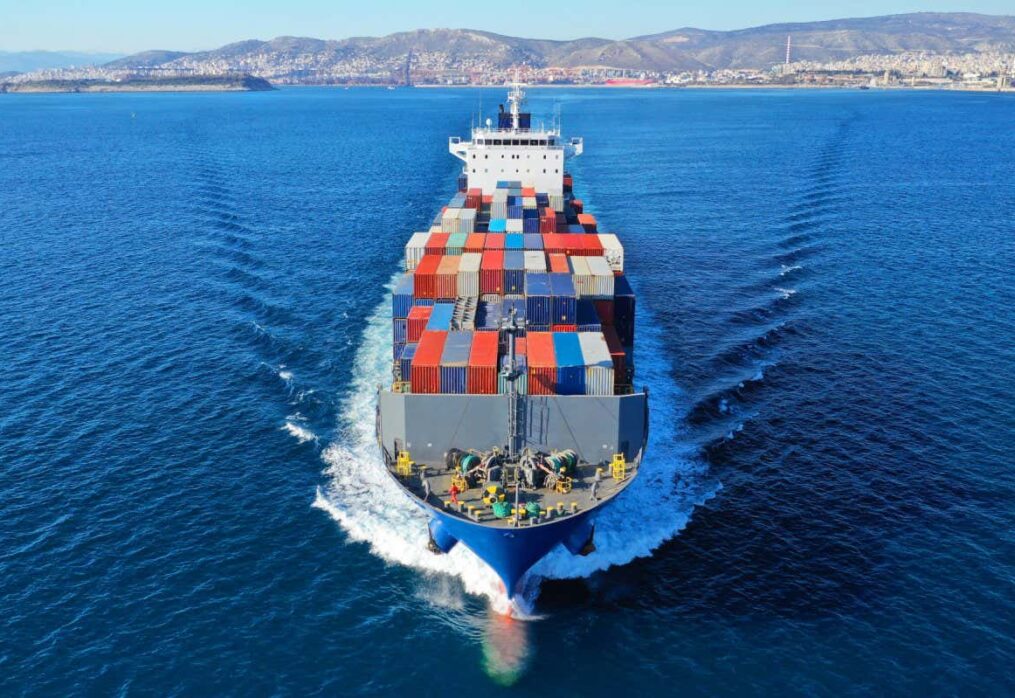Decarbonising the shipping industry will cost more than $1 trillion
Powering all shipping vessels with zero-emission fuels by 2050 would slash the industry’s emissions, but it would require between $1 trillion and $1.4 trillion of investment
Environment
22 September 2022
Switching ships away from fossil fuels by 2050 requires a substantial global financial investment Aerial-motion
More than $1 trillion of investment would be required to decarbonise the shipping industry by 2050, according to a report released 21 September at the Global Maritime Forum summit in Brooklyn, New York, during Climate Week NYC.
The global shipping industry is responsible for about 3 per cent of total global greenhouse gas emissions, roughly equivalent to the total annual emissions from Japan. Most of the industry’s emissions come from fossil fuels burned to propel the more than 100,000 large ships on the ocean, and total emissions could more than double by 2050 without efforts to decarbonise.
Improving energy efficiency could significantly reduce emissions from shipping, but fully decarbonising ultimately requires replacing fossil fuels outright with zero-emissions fuels such as hydrogen and ammonia produced using renewable energy and methanol, says Domagoj Baresic at University Maritime Advisory Services, a shipping consultancy in the UK.
Baresic and Katharine Palmer at Lloyd’s Register, a maritime services company in the UK, considered what progress the shipping industry has made so far, focusing on what they call a “breakthrough” target of using zero-emission fuel for 5 per cent of international shipping fuel and 15 per cent of domestic shipping fuel by 2030.
“Even though 5 per cent sounds small, it implies that all of the necessary conditions start being in place” for rapidly increasing use of zero-emission fuel from that point on, says Baresic. Almost no zero-emission fuel is currently used for shipping, he says.
The International Maritime Organization, the UN agency that regulates international shipping, has adopted a strategy to reduce shipping emissions 50 per cent by 2050. A more ambitious plan to reduce shipping emissions 100 per cent by 2050 has been signed by at least 14 countries, including the US and the UK.
“Two years back there was literally nothing happening in the shipping space [on decarbonisation],” says Rasmus Bach Nielsen at Trafigura, a global commodities trading company headquartered in Singapore. “I think you have to appreciate how fast things are happening.”
Despite commitments, however, the industry is only “partially on track” towards the 2030 targets, the report finds.
“Now we’re at that stage where it’s about seeing commitments turn into real-world actions,” says Baresic. “Is the money there? Are we actually seeing the construction of the ships and the infrastructure?”
The report counts at least 203 green shipping pilot projects underway but says those must now translate to longer-term commitments such as investments in zero-emission fuel infrastructure. Some ships could be powered with electric batteries, nuclear power or even old-fashioned wind-powered sails, though the report considers zero-emission fuels to be the central strategy.
Twenty-two countries have also committed to create six zero-emissions shipping routes by 2025, including a route between Shanghai, China, and Los Angeles. These routes could help create the initial infrastructure needed to scale up green shipping.
In all, the report estimates that decarbonising global shipping by 2050 would require between $1 trillion and $1.4 trillion of investment.
“It’s a big number,” says Baresic, but it would derive from global investments from multiple industries spread over decades.
“Now we’ve got a common destination,” says Palmer. “The question is how fast will we go there.”
More on these topics:
